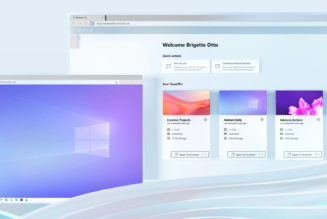It used to be called “telecommuting”. Already the term sounds archaic and has been rapidly displaced by the broader “Work from Home (WFH)” phrase that caught fire in the wake of the COVID-19 pandemic. Businesses all over the world have been experimenting with telecommuting for decades, but the pandemic has woken them up to the fact that it need not remain an experiment.
A Practitioner’s View
Sujoy Chatterjee, VP of Infrastructure Services at ITC Infotech, says, “WFH can be a wider reality, resulting in interesting, pleasant and desirable upsides. Forward-thinking CIOs and business leaders are already working on long term strategies to support a distributed workforce, not just for full-time employees, but for part-time employees as well.”
One such leader Sujoy is working with is Sibusiso Shabangu, CIO and Head of End-User Experience at ABSA Group. In a recent discussion along with ITC Infotech, Sibusiso observed, “Heads on the desk do not equal productivity.”
Sibusiso has observed productivity gains through the WFH model adopted at his organization, and he believes that employees now have additional time for their personal pursuits, and teams are more tightly knit. The secret of this success? A deep focus on end-user experience.
Sibusiso’s experience with implementing WFH is reflected in the larger trend that is becoming visible. A recent survey conducted by an analyst firm of 317 CFOs and finance leaders has revealed that 47% of respondents are going to move at least 10% of their on-site employees to permanent remote positions. Overall, the survey has shown that 48% of employees were likely to work remotely at least part of the time after COVID-19.
The Real Challenges
The real challenge organizations face with WFH is 3-fold:
- Security: Data protection was the single-largest problem. WFH employees may not be aware of the processes they need to adopt to keep data secure, maintain privacy and keep enterprise assets protected. A security policy for remote workers is required.
- Connectivity: Pre-COVID-19, employees were connecting inside-out. Post-COVID-19 they are connecting from outside into the organization. Employees need better bandwidth to stay connected and manage rich, data-intensive transactions and processes.
- Support: Earlier, support was available easily as field service engineers were running around the office floor. Now, employees have to log a ticket remotely and wait for remote support. For users, the convenience has gone and for service engineers the new processes are frustrating. As a result, organizations need to invest in developing new skills for field engineers.
Enabling Interesting Outcomes
The rewards of addressing the three challenges offset the pain. One outcome is especially interesting.
Recapping the experience of ITC Infotech, Sujoy says, “WFH has driven innovation in the remote support practice. Earlier, users would call the helpdesk, identify themselves, describe the problem and wait endlessly for the solution. Organizations believed that the resulting growth in support volumes would force an increase in helpdesk agents. But new automated processes that identify the user, provide self-help and get problems fixed without raising a ticket have emerged. Organizations are discovering that with efficient self-help processes they can reduce the support team numbers.”
The key concerns around WFH continue to centre on the impact on productivity and the end-user experience. However, the fears of a negative impact are unfounded. “This is the new way of working,” says Sibusiso, “People enjoy working from home. And if you trust them, they will repay it by working for more hours.” In addition, because commute times have dropped to zero, employees have more time on their hands to not only attend to personal pursuits but devote more time to work and improve their productivity. In their case, where WFH had to be initially enforced, adoption rates have gone up from 12% in the first three weeks of the pandemic to more than 70% presently. Usage of tools like Microsoft Teams, which were always around but never used, shot up because employees can no longer work without a collaboration tool.
Driving Adoption
But adoption cannot be forced. Adoption depends on the maturity level of the organization. For example, IT support teams that found it easy to work in close proximity to users, with physical access to machines, had to be taught soft skills to ensure an improvement in end-user experience.
Much of the success of WFH initiatives depends on the end-user experience delivered to employees. Earlier, everything for employees was servers, desktops, applications and network speed. COVID-19 has brought out the human aspect of people. Now, says Sibusiso, when they interact online, they end up playing games together, take the time to discuss their hobbies, and exchange all kinds of amazing details about themselves. The WFH paradigm has humanized all interactions. The second change has been a distinct move from fancy devices (Macs and iPads) to an emphasis on experience. Employees want to connect safely; they want to connect quickly; they want their problems solved efficiently.
Sibusiso has an interesting incident to narrate related to user experience. One of his colleagues called up the helpdesk saying that every time his wife leaves the house he can’t work. After some investigation, the support team discovered that the employee was connected to his wife’s mobile phone hot spot. When she went out, the connectivity went with her! What this means is that unique challenges will persist, but they are not impossible to address.
WFH will continue to be a growing trend much after the pandemic has retreated. Organizations focused on providing self-help, improving user experience, listening to user feedback and acting on it will have happier employees and are guaranteed to make productivity gains.










